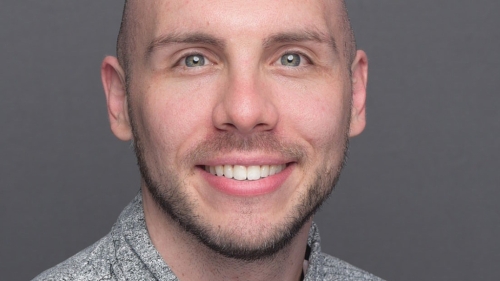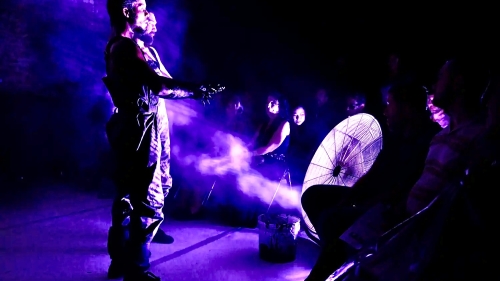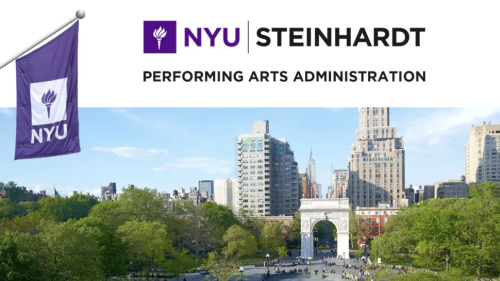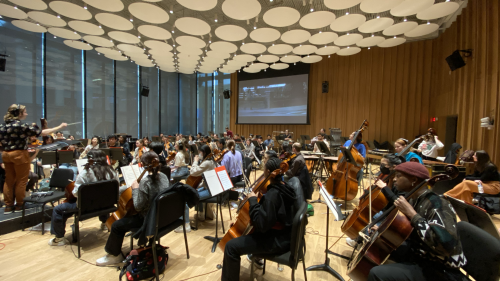
For Joe Petrowski (MA in PAA '20), the journey from lighting designer to Director of Ticketing and Customer Relations at Park Avenue Armory wasn’t something he planned—but it turned into a fulfilling and multidimensional career that blends technical skills, creativity, and a deep appreciation for the performing arts. Through all of it, Joe has stayed open to opportunity, balanced structure with flexibility, and found a way to honor his creativity as an artist and arts manager.
Joe was interviewed by current Performing Arts Administration graduate student Grace Palmer ('26). The article has been edited for length and clarity.
Discovering Arts Administration Through the Box Office
Joe’s foray into arts administration began unexpectedly. While studying lighting design as an undergraduate student, he took a part-time job in his university’s box office. That role, initially to simply provide some income, quickly became a launching pad.
"I definitely did not know arts administration would be my future," he recalls. "But every step of the way, different organizations gave me opportunities to move up and expand my skills, and I continued looking for the next thing to challenge me and satisfy my creativity." From part-time representative to director-level leadership, Joe steadily progressed through positions such as Box Office Supervisor and Assistant Box Office Manager, accumulating hands-on experience in ticketing, customer service, and Customer Relationship Management (CRM) systems.
"Running a box office became a really reliable, consistent form of livelihood," Joe says. "Now I take on lighting design projects because I’m excited about them—not because I need to pay the bills. It's more about fulfilling the creative itch."

A collage of seat map artwork created by Joe Petrowski using Tessitura software. Designs include an American flag, colorful balloons and a birthday cake with candles, stylized Easter eggs on grass, and a rainbow ending in a pot of gold.
The NYU PAA Experience: Learning, Networking, and Navigating the Arts
When Joe enrolled in NYU Steinhardt’s Performing Arts Administration (PAA) program, his primary goal was to expand his network and deepen his knowledge of the industry. "I felt that grad school would be a good opportunity to meet people from around the country and the world," he explains. Leveraging NYU's extensive alumni and performing arts industry network, Joe made a habit of connecting with alumni panelists and guest speakers on LinkedIn and sending thoughtful messages to continue the conversation. "At the end of the day, if we're all in performing arts, we're all going to eventually cross paths with each other."
Despite working full-time, Joe remained immersed in the New York City arts scene. He made the most of his NYU student status to attend shows on campus and throughout the city. "I did my best to see as many shows as I could—to really get an understanding of what was happening in the performing arts world."
One of the most valuable takeaways from his NYU education was learning how to collaborate with peers. "Group projects, which often felt very frustrating at the time, taught me so much about project and time management," he says. "It wasn’t always easy—everyone had different commitments. But looking back, I realize that it actually prepared us to produce something together under a very tight timeline and to work with people who had varying levels of availability."
Balancing Two Passions: Ticketing by Day, Lighting by Night
Although Joe’s performing arts administration job became his primary career, he always continued his creative work. Working as a freelance lighting designer became his “evening and weekend fun.” He now chooses projects that are “exciting and creative” instead of feeling like he has to take them to pay the bills.
"It’s nice to have the balance of a stable day job and a creative outlet on evenings and weekends," he shares. "I’m actually grateful for it. When a lighting design opportunity comes up, I can say yes because I want to—not because I have to."
Interestingly, Joe finds a surprising overlap between his two roles. "People don’t realize it, but box office ticketing and lighting design are actually similar. Both are technical, both are creative, and both involve problem-solving within technological constraints."

Lighting design by Joe Petrowski at Arts Bath, May 2024
Creativity in Ticketing: From Elevating Box Office Operations to Seat Maps as Art
Joe’s creative side also makes unexpected appearances in his administrative role. At Park Avenue Armory, he implemented the organization’s first “Select Your Own Seat” (SYOS) map, allowing patrons to choose their seats online rather than relying on the automated best-available option.
This not only improved customer satisfaction but also significantly reduced box office call volume. Beyond logistics, Joe has become affectionately known in industry circles as “the guy who does seat map artwork.” Using Tessitura’s seat map technology, he’s crafted colorful, festive designs that are equal parts playful and precise. “Although it looks straightforward, it was quite fun (and challenging) to get the exact combination of these colors to display at the same time,” he shares. “People have even recognized me at conferences because of it!”
He also recently shared Park Avenue Armory’s approach to genre segmentation at the 2024 Audience 360 Annual Community Meeting—a reminder that even in back-end systems, creativity and strategy go hand in hand.
Advice for Students and Emerging Professionals
For students entering the field of arts administration—especially those coming from artistic backgrounds—Joe offers practical, heartfelt advice:
"Box office work is a great place to start. It intersects with every department: marketing, development, production, etc. It gives you insight into how an arts organization operates."
He encourages students to treat their assignments and internships as portfolio pieces. "Just because something was done in school doesn’t mean it lacks value. And many skills you pick up—like communication, time management, and project coordination—are transferable."
Joe also emphasizes the importance of self-awareness and boundaries. "It takes time to figure out what you’re capable of with your time constraints. Sometimes, it’s okay to say no. Don’t overcommit and underdeliver. Focus on producing work you’re proud of."
By leveraging his strengths and creativity, Joe has found a unique way to thrive in both administrative and artistic roles. His story reflects the evolving nature of arts administration—where passion and practicality can coexist and where forging your own path can lead to meaningful and lasting success.


